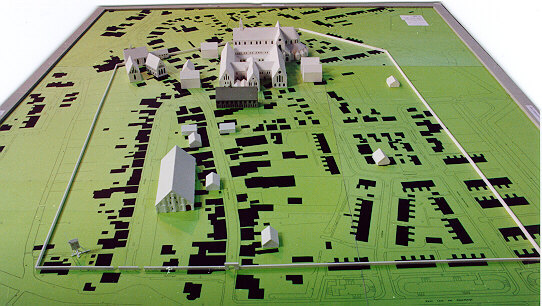
Model of St. Bernards Abbey on the map of recent Aduard.
The grey building is the Abdijkerk, the former infirmary.
(Source: © J. Loer, Aduard)
The history of the Cistercians and Aduard Abbey
His description of the cathedral has been supported scientifically by the outcome of excavations that took place in the 1940s supervised by the late professor Van Giffen. The design of the model shown in the abbey museum is based on his work and the views of his successors.
 | |
| Figure 3:
Model of St. Bernards Abbey on the map of recent Aduard. The grey building is the Abdijkerk, the former infirmary. (Source: © J. Loer, Aduard) |
The position of the buildings in the centre of the abbey in relation to the cathedral is in accordance with the standard Cistercian plan. There is no information available of the buildings in the area between this centre and the abbey wall. In all probability there must have been quite a number of edifices that served economical purposes, but whose foundations have not been uncovered yet.
For the modern tourist it may be interesting to know what aspects of the history of Aduard abbey survived the ages.